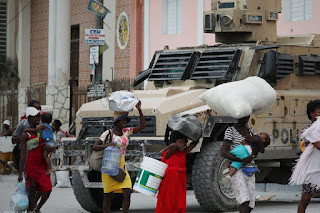Risking It All: The Deadly Gamble of Migrants Seeking a New Life in the UK
T
he daily reality for migrants is one of relentless desperation and unimaginable risk. Trapped in makeshift camps with little to no money to pay smugglers for safer crossings, many are left with only dangerous alternatives. For some, the back of a truck heading to the UK represents a faint glimmer of hope. Yet, this route is fraught with life-threatening risks, including asphyxiation, fatal accidents, and violent confrontations. These migrants live in squalor, facing freezing nights and contaminated environments, driven solely by their dream of a better future across the Channel.
The camps housing migrants are overcrowded, poorly equipped, and offer no semblance of safety or comfort. Basic necessities are scarce, and sanitation is virtually non-existent, compounding the physical and mental toll on those stranded. Each day, migrants walk miles along highways or linger in parking lots, hoping to sneak into trucks unnoticed. However, heightened security measures at the Channel Tunnel and Calais port, including thermal cameras, barbed wire, and motion detectors, make successful crossings nearly impossible. Funded by international cooperation, these defences turn the migrants’ aspirations into near-impossible endeavors.
For migrants, the decision to hide in the axles of vehicles or inside airtight compartments is a gamble with their lives. The risks of suffocation, being crushed by cargo, or falling from moving vehicles are alarmingly high. Tragedies are frequent, and each failed attempt takes a physical and emotional toll. Yet, the incentive of a brighter future often outweighs the fear of fatal injuries. Desperation propels them forward, with every return to the camp marking another chapter of frustration and resolve to try again.
The camps housing migrants are overcrowded, poorly equipped, and offer no semblance of safety or comfort. Basic necessities are scarce, and sanitation is virtually non-existent, compounding the physical and mental toll on those stranded. Each day, migrants walk miles along highways or linger in parking lots, hoping to sneak into trucks unnoticed. However, heightened security measures at the Channel Tunnel and Calais port, including thermal cameras, barbed wire, and motion detectors, make successful crossings nearly impossible. Funded by international cooperation, these defences turn the migrants’ aspirations into near-impossible endeavors.
For migrants, the decision to hide in the axles of vehicles or inside airtight compartments is a gamble with their lives. The risks of suffocation, being crushed by cargo, or falling from moving vehicles are alarmingly high. Tragedies are frequent, and each failed attempt takes a physical and emotional toll. Yet, the incentive of a brighter future often outweighs the fear of fatal injuries. Desperation propels them forward, with every return to the camp marking another chapter of frustration and resolve to try again.
Migrants not only contend with physical dangers but also face hostility and violence from truck drivers who perceive them as intruders. Confrontations often escalate into physical fights and threats, adding another layer of peril to their already harrowing journeys. Families with children face even graver dilemmas, as they must weigh the risks of suffocation or injury inside a truck against the dangers of crossing turbulent waters in a small, overcrowded boat. For these families, every decision is a heartbreaking calculation of which risk is marginally less deadly.
For many, the decision to attempt truck crossings stems from past traumas or fears of drowning during boat crossings. Financial constraints also leave them with no other viable options. Even with the staggering risks involved, these migrants often view the dangerous truck crossings as their only possible route. Each failure intensifies their frustration and forces them to confront an agonizing choice: persist or give up altogether. The resilience required to endure these conditions underscores the depths of their desperation.
The struggles of these migrants highlight a brutal reality faced by those trapped in transit. Their survival hinges on enduring inhumane conditions, physical violence, and the constant threat of death. Yet, their courage and resilience shine through, a testament to the lengths they are willing to go for the hope of a better future. For them, the journey is not just a physical ordeal but a profound act of sacrifice and determination — a willingness to risk it all for a chance at safety and opportunity.
This article is based on first-hand conversations with migrants documented on the Info Migrants Page.
.png)


Comments
Post a Comment